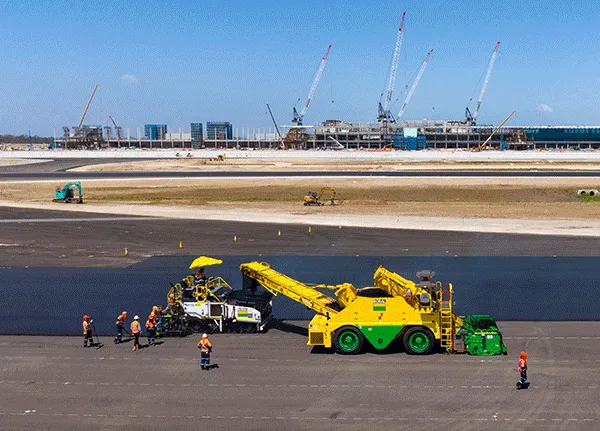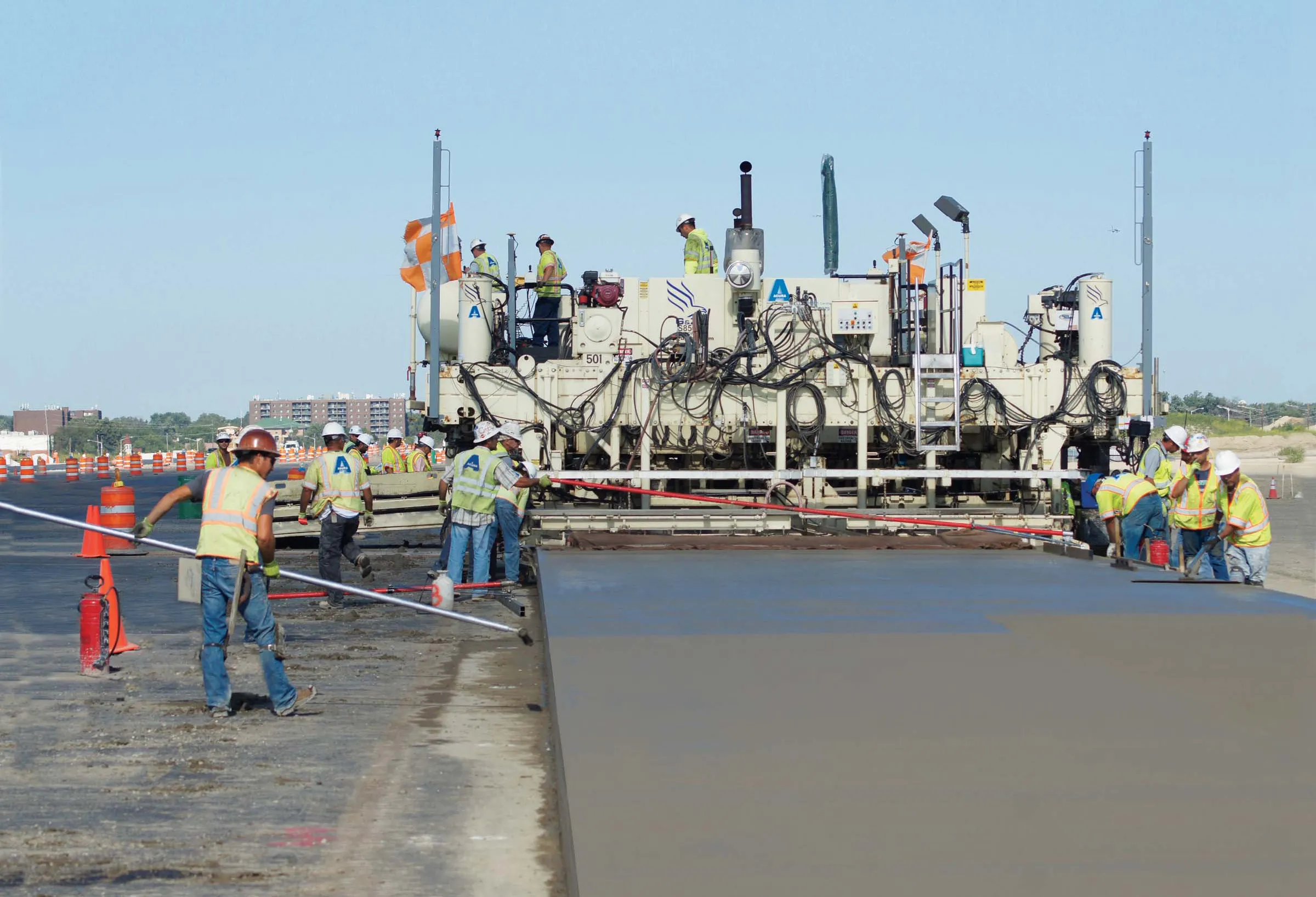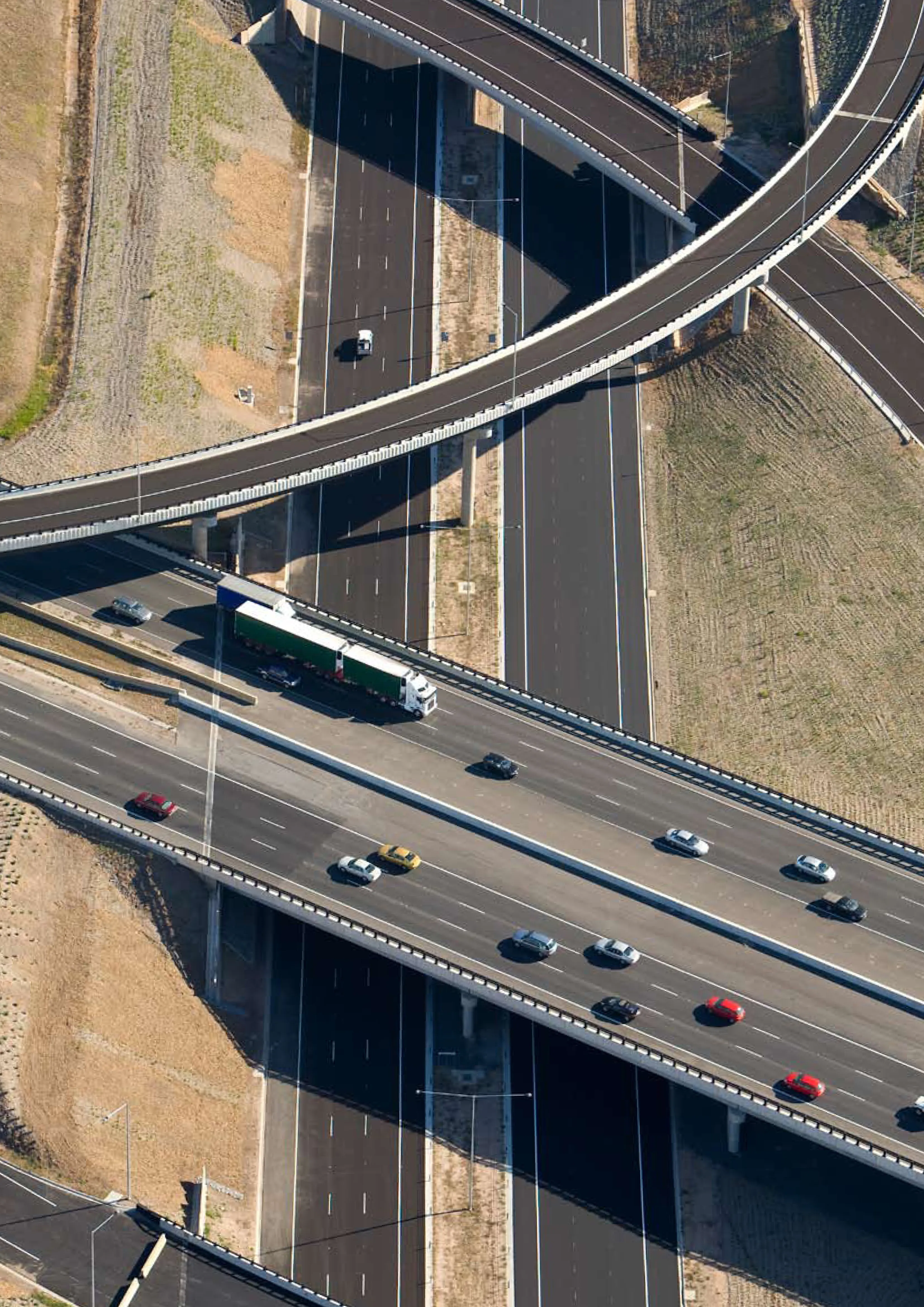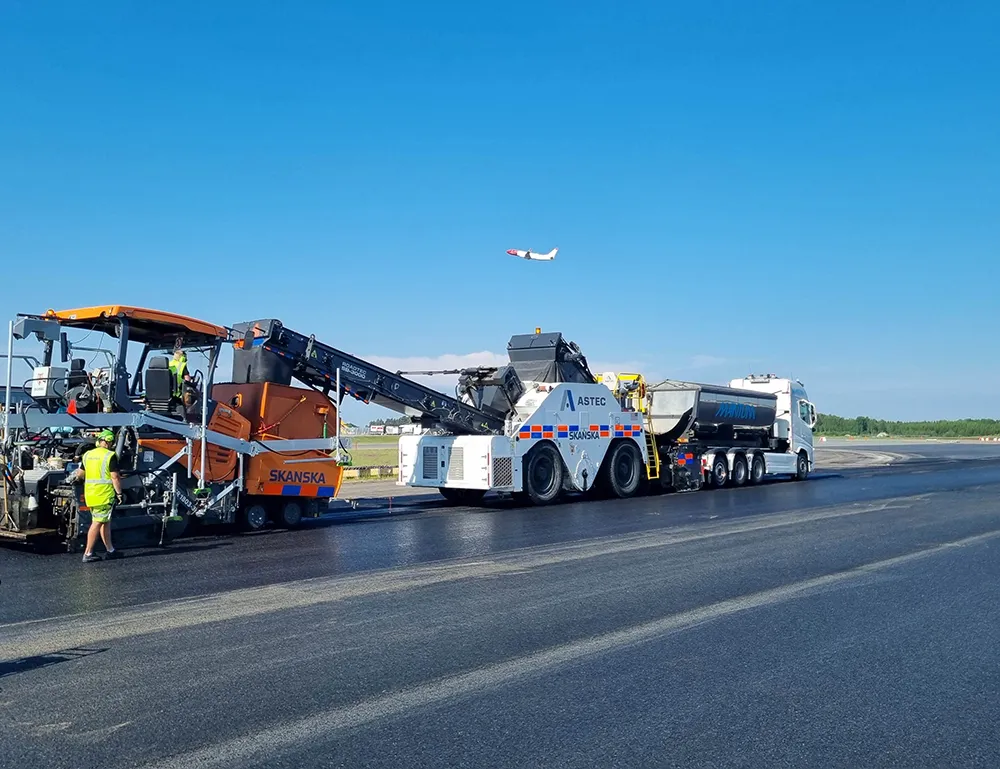
Astec’s new model, the Roadtec SB-3000 “Shuttle Buggy”, has been helping deliver paving works on the Western Sydney Airport project in Australia.
Scheduled to open in 2026, the totally new airport will have the capacity to accommodate up to ten million passengers annually. Also known as Badgerys Creek Airport - it is within the Sydney suburb of Badgerys Creek – it was officially designated by the federal government in 2014 after decades of debate about where a new airport should be located within Greater Sydney.
The new airport will have 24-hour operation and will supplement Kingsford Smith Airport, which has reached capacity due to a nighttime curfew and flight caps. The first stage of construction began in 2018 and is expected to be complete and open by December 2026.
In February 2023, Boral was appointed as the partner to produce, deliver and lay the asphalt for the runway, taxiway and airside roads and pavements at the new Western Sydney International Airport. Boral, as part of the CPB Contractors and ACCIONA Australia joint venture, is overseeing the surfacing project, ensuring that the airport's infrastructure is completed to the highest standards of quality, safety and sustainability.
Astec says that reliability of performance was a key factor in Boral’s decision to include the SB-3000 Material Transfer Vehicle in its fleet of equipment on the major infrastructure project in New South Wales state.
The new model Astec Shuttle Buggy includes a number of enhanced design features that are contributing to the continued success of the SB-3000. Increased capacity is one of the benefits. When fully laden, the SB-3000 can store more than 30 tonnes of product. There is also four-wheel steering – including crab steering – to provide flexibility for delivering medium to large projects while retaining the manoeuvrability of a smaller machine.
Dual hydraulically controlled platform stations enhance operator comfort plus provide safety benefits including clear line of sight to the sides, back and front.
A Stage 5 Cummins B6.7 engine - quieter and more environmentally friendly - powers the Shuttle Buggy which also has a wider, lower profile design for improved overall balance. There is also easier servicing and maintenance thanks to all major components being located at ground level.
Boral has much experience of airport paving, including the upgrade to Emerald Airport in Queensland state that showcased the country’s first stone mastic asphalt runway, completed in 2020. The runway is expected to last five-plus years longer than a standard asphalt runway surface and is forecast to provide significant savings for Central Highlands Regional Council, the airport owner, in future maintenance costs due to the longer lifespan.
Using stone mastic asphalt also eliminated the need to cut regularly spaced grooves in the 1.9km-long surface – a normal runway compliance process that could have cost the council up to A$700,000 (US$455,00).
Stone mastic asphalt contains a larger proportion of coarse aggregate and more binder than traditional runway surfaces and provides the same skid resistance performance as grooved runway surfaces. Additional benefits of stone mastic asphalt include increased rutting resistance, durability and performance in hot and cold weather – all key considerations for the airport project.
Boral collaborated with the project team to develop mix designs and perform placement trials prior to resurfacing the main runway, taxiway and apron bays, reconstructing the general and eastern aprons and refuelling area and expanding the general apron. The works were primarily performed at night to enable the airport to return to live operations from 5.30am each day.
The works were part of a A$16 million (US$10.5 million) upgrade of Emerald Airport's facilities.








